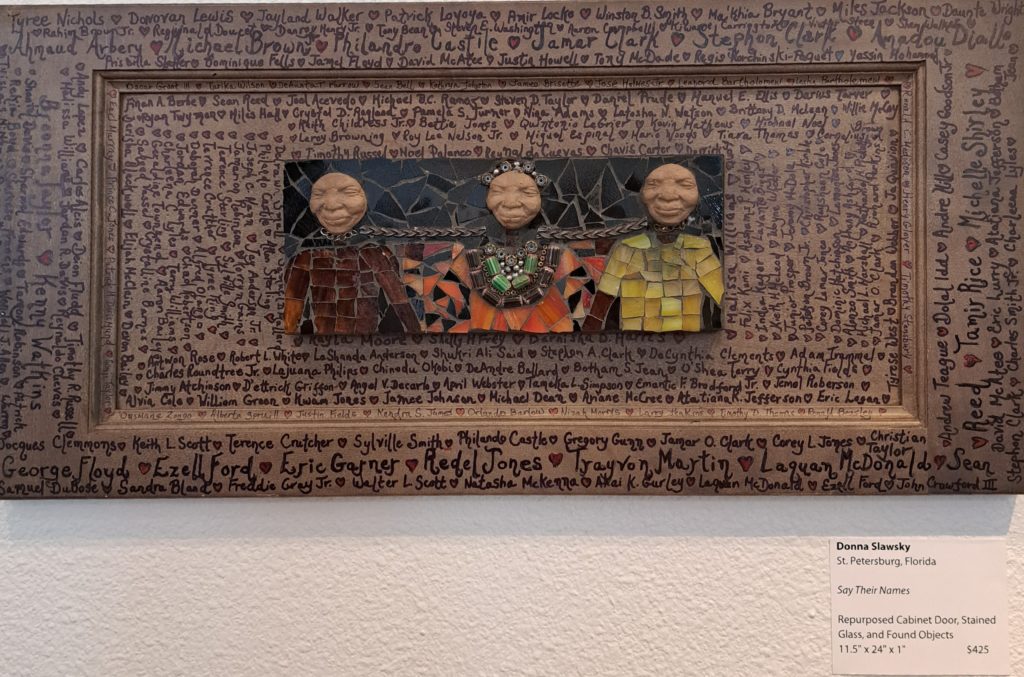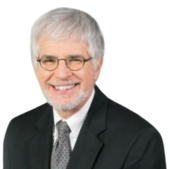
On the last day of 1995, when I was working as a reference librarian for USA TODAY and preparing to teach for the first time as an adjunct professor at the Catholic University of America School of Library and Information Science in the Summer 1996 semester, I read a brief, intriguing item in The Washington Post Book World.
The article described the innovative and creative work at HarperCollins publishers by their librarian, Donna Slawsky. In particular, it featured the art exhibits she curated (on her own initiative) on the ground floor level of the headquarters building, which was then located in midtown Manhattan, not far from the Museum of Modern Art.
During a subsequent trip to New York, I later visited the HarperCollins exhibition space the Post article called “a surprising mini-museum,” and began what became a lifelong friendship with Donna. Although she now lives in Florida, and is no longer directly involved in the information world, she exemplifies what I described in my first book as “living in more than one world.” She has long balanced involvement in such worlds as information, business, music, and art. I’m grateful to her for answering my questions about her current activities, and how they relate to her previous pursuits.
Can you provide an overview of your current work, both in the art world and any information-related work you are now performing?
I haven’t been in the information sphere for quite some time. When we moved away from New York City, I took on some freelance metadata and taxonomy work. I was tired of staring at a computer screen, so decided to move on from that career. My husband is a great chef, so we opened a restaurant in Bradenton, Florida and retired from that in 2018. The space was also a gallery. We were situated in the Bradenton Village of the Arts, so that made sense. I sold my own mosaic art and the work of local artists.
How did your experience as a corporate librarian at HarperCollins, related positions at publishing/information companies, and your teaching inform your current work and day-to-day activities?
Great question! I think that everything we do throughout our lives prepares us for the next step. I went from a left-brained activity as a taxonomist and librarian to a right-brained activity as an artist. To be honest, New York was dragging me down with 3 jobs – taxonomist at Time Inc., lecturer at Columbia University, and part time reference librarian at Baruch College. I had to move to slow down the pace. My body and mind were in a depressed state. When my husband said he wanted to move, I was nervous, but willing. I needed a new start. I’m fortunate to be both analytical and creative, but never had enough time to discover creative opportunities or even what sparked my imagination.
Volunteering at the gallery, I’m able to use the curating skills I acquired managing the exhibits in the lobby of HarperCollins. The research skills practiced as a librarian are invaluable when I need to find inspiration for a project or any other information for everyday life. Having advanced computer skills has been useful in all activities, including setting up a web site for my artwork and doing marketing and finances for the restaurant. The teaching experience made it easy to transition to giving mosaics classes. Throughout my library career, I learned how to work well with people and how to solve problems without getting flustered. This made transitioning to restauranteur and artist seamless and enjoyable.

In New York you also sang regularly. Are you still involved musically? Related to that, can you briefly explain your process as an artist, both creatively and in business areas such as showing your work at galleries, selling artwork, and related venues?
Being a singer in New York was very competitive and although I sang classical music professionally, I discovered that as an introvert, I was lacking the drive to get to the next level in that career. One thing I’ve learned through all the careers and interests I’ve pursued is that you must know when to walk away. You must know your limitations and embrace yourself even though you may be disappointed. It’s better to be disappointed than miserable.
My singing career ended when I moved down to Florida because of severe hearing loss, although I still sing at home and occasionally with my husband’s band. I find mosaics satisfies my need to be creative. Mostly, I happily practice piano and support my husband, who is an active bass player.
Mosaics is a unique art form. You create beauty from the broken. Glass and china are cut and combined to create works of art. All materials I use are refurbished or recycled. For example, as surfaces I use used cabinet doors or find things like trays and even art painted on wood (the mosaic is laid on top of the art) at thrift shops. The stained glass I use are scraps from stained glass artists I know and the china is acquired at thrift shops.
I’ve found that networking in your chosen field is the key to being successful and making your passion into a business. This was true in librarianship as it is with art. To that end, I belong to several artists organizations in our area, including the Anna Maria Artists Guild, Morean Art Center, and CraftArt Gallery. The latter two are in St. Petersburg, where we currently live. I also volunteer at the CraftArt Gallery once or twice a week and enter my work in local art shows.
I recently won first place in the ”Rebels” exhibition at the CraftArt Gallery for my piece, “Say Their Names,” about unarmed black people murdered by police. My work appears in the Artists Guild of Anna Maria Island Gallery, The Morean Art Center, The CraftArt Gallery and in the gift shop of the Florida Holocaust Museum. I’ve created quite a bit of Judaica-related art over the past few years. Most of the other mosaic work is of the beautiful birds and natural scenes on the Gulf Coast. Lately, I’ve been interested in more topical and political subjects, especially given the leadership here in Florida. As a former librarian and teacher, I’m outraged by the book bans and laws that restrict the teaching of African American history. I’m formulating ideas for works based on my feelings about these issues.
